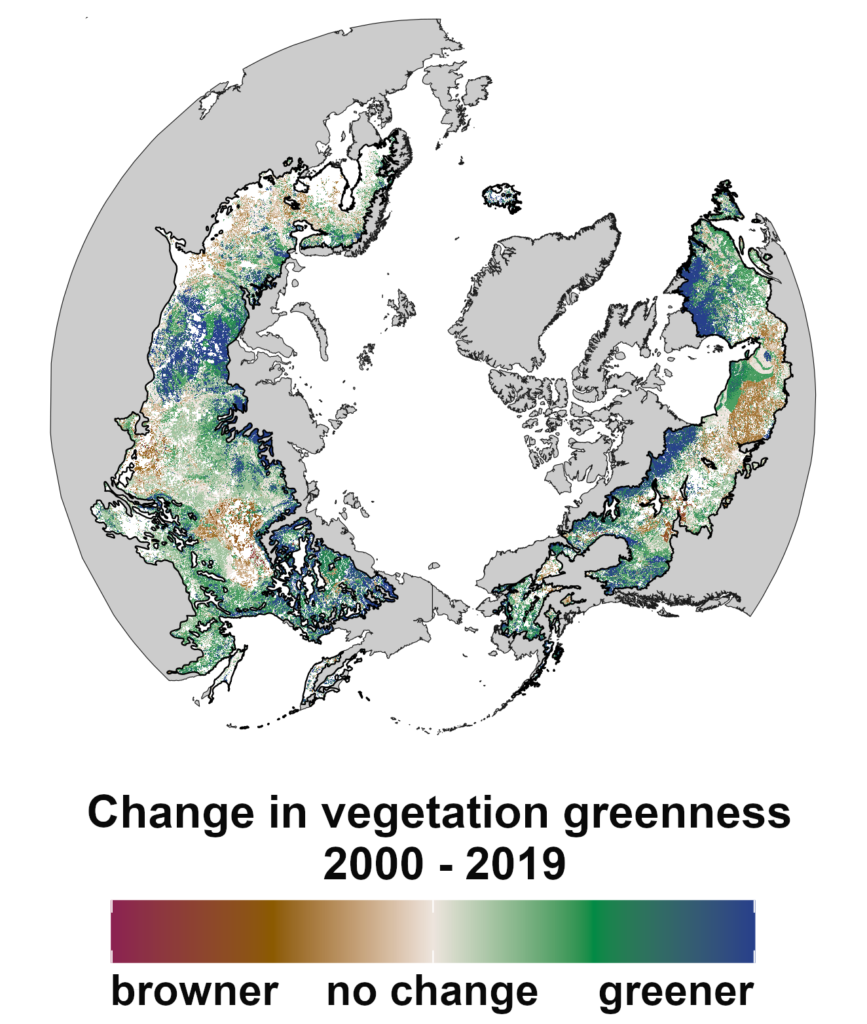
New research from the GEODE Lab shows rising temperatures are causing Earth’s coldest forests to shift northward. Drs. Logan Berner and Scott Goetz authored a new article, “Satellite observations document trends consistent with a boreal forest biome shift,” that was recently published in Global Change Biology. The study focused on the boreal forest, which is a belt of cold-tolerant conifer trees that stretches nearly 9,000 miles across northern North American and Eurasia. The boreal forest accounts for almost a quarter of the Earth’s forest area and is the mostly rapidly warming forest biome. The researchers looked at several decades of moderate-resolution satellite observations and assessed where and why vegetation became greener and browner during recent decades. “Our study shows climate change is causing boreal trees and shrubs to expand into arctic and alpine tundra, while at the same time causing trees to become more stressed and die along the warm southern margins of the boreal forest,” Berner said. “These dynamics could lead to a gradual northward shift in the geographic extent of the boreal forest biome.” Such a boreal biome shift could have consequences for wildlife, wildfires, and climate feedbacks related to carbon cycling and surface albedo. This study was part of a larger initiative funded by NASA’s Arctic-Boreal Vulnerability Experiment (ABoVE) that will involve further efforts to understand the extent, nature, cause and consequence of an emerging boreal biome shift. Goetz is the science lead for ABoVE.
Read more about the research from the American Geophysical Union’s science news outlet, Eos.
For a short listen, check out a radio news story about the research from KNAU.
For a longer listen, tune in to an in-depth interview with Dr. Berner from ‘Eyes on Earth,’ a science podcast from the USGS.

